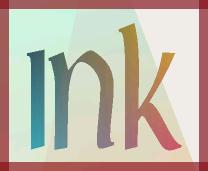|
SCOUG OS/2 For You - December 1998
One topic that seems to be avoided by everyone is how stable and long lasting the inks and papers are that we use in inkjet printing. So here goes, with thanks to contributors to the Epson inkjet mailing list, and a number of CompuServe Forums, including those for Photographers and the various manufacturers of printers. For those interested, the Epson inkjet list can be joined by mailing epson-inkjet@leben.com and placing subscribe in your text. The consensus seems to be twofold. With current technology, inkjet color inks tend to shift over time. Also, the actual prints tend to fade over time. Period. While most of this comes from experiments done with Epson printers, the problems certainly aren't limited to Epsons. It's just that there are so many folks out there running professional or semi-pro at home businesses using these printers with either Macs or PC's, together with Quark or PhotoShop -- and these people started to notice both the color shifting and fading issues after a) clients bitched, and b) they started to do tests. Exactly how big a deal these issues are depends on your uses of the prints. For professional sales of pictures, it's a bummer. For you or I doing at home printing of images, I don't worry, because the color shifts aren't huge -- it is just visible that the color balance on that neat photo has altered over time, maybe not quite as 'vibrant' as it was. On some informal testing that I'm doing at home, the color shifting seems to stop after a few weeks, and isn't always noticeable depending on the photo. Fading isn't a huge deal either if you keep your photos tucked away and haul them out every so often to bore or amaze your friends. Many people report a couple of years of success (remember, these photo quality inkjets have really only been on the market a couple of years). But in direct sunlight, all of the papers that I have tried do indeed fade, and noticeably so over time. Some combinations are a bit faster or slower, but from surfing the 'net it seems that virtually all inkjet printers are subject to this process. Epson, HP, Lexmark, Canon, all the majors are aware of these issues and are working on them as we speak. After all, its in their best interests to do so. But it is a reminder that there are tradeoffs for new technology, and for right now I would suggest that you keep a nice detailed scan of that favorite photograph so that you can print it out again if necessary. On other fronts, readers ask the neatest questions -- if only I had the answers. Bob asks for a comparison of the Lexmark 5700 and the Epson 600 printers (both recently supplanted in the lineup and hence available heavily discounted). I noticed that Egghead had the 5700 for $199 and either the new 640 or the original Epson Photo for $199. Shop around, the prices out there are simply amazing. Back to the 5700/600 comparison, I think that the biggest difference is the 5700 comes with OS/2 drivers out of the box while you have to scrounge the German drivers for the 600 (the IBM OMNI driver is really ugly for quality color output). Both are four color printers and give very nice output. Both are painfully slow on reproducing photos. For general use, I'd give the nod to the Lexmark, for photo quality, go with the Epson. Andrea asks about the slowness of printing black & white text on the Epson Photo/700/EX series. Yeah its painful Two update notes. CFM Twain drivers are up to 5.10 (http://www. cfm.de/f_products_start.htm). Also, Lexmark has corrected a problem between their injket 5000/5700 series drivers and the new Netscape Communicator 4 for OS/2. The download is at something like:
http://drivers.lexmark.com/drivers. nsf/software/pn=CJOS57LE
By day, Tony Butka is a bureaucrat for Los Angeles County. In his other life he lives in a loft surrounded by computers, printers, and a host of vinyl records.
Copyright 1998 the Southern California OS/2 User Group. ALL RIGHTS
RESERVED.
SCOUG is a trademark of the Southern California OS/2 User Group.
|









